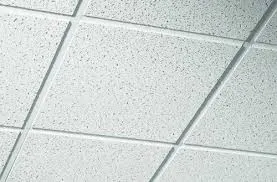Nov . 25, 2024 00:23 Back to list
Understanding Ceiling Grid Systems for Effective Interior Design and Installation
Understanding Ceiling Grids A Comprehensive Overview
Ceiling grids are an integral part of modern architectural design and construction. They serve both functional and aesthetic purposes, making them a vital consideration for both residential and commercial spaces. This article will explore the concept of ceiling grids, their components, benefits, and applications, ultimately providing a well-rounded understanding of this fundamental aspect of interior design.
What is a Ceiling Grid?
A ceiling grid is a framework that supports ceiling tiles, panels, or other types of overhead surfaces. It is typically made of metal or wood and consists of a series of main runners and cross tees arranged in a grid pattern. This structure allows for easy installation of ceiling tiles and provides space for electrical fixtures, HVAC systems, and other mechanical equipment above the ceiling.
The grid system can be constructed in various configurations, but the most common design features a 2x2 or 2x4 tile layout. Ceiling grids can be suspended from the overhead structure using wires or mounted directly to the ceiling, depending on the design requirements.
Components of a Ceiling Grid
1. Main Runners These are the primary support elements of the grid that run in one direction, typically spanning the length of the room. They are the first components to be installed and provide the foundation for the entire grid system.
2. Cross Tees These are the shorter components that connect to the main runners to form the grid. Cross tees can be adjusted to accommodate different tile sizes, allowing for flexibility in design.
3. Wall Angles These are installed along the perimeter of the ceiling to provide a finished edge and support for the grid. Wall angles also help to create a clean transition between the ceiling and walls.
4. Tiles or Panels These are the finishing components that fill the grid. They come in various materials, including mineral fiber, metal, and polystyrene, and can be selected based on aesthetic requirements and acoustic properties.
what is ceiling grid

Benefits of Ceiling Grids
1. Easy Installation One of the main advantages of ceiling grids is their ease of installation. The modular nature of the grid system allows for quick and efficient assembly, making them ideal for both DIY projects and professional installations.
2. Accessibility Ceiling grids facilitate easy access to the space above the ceiling. This is particularly beneficial for maintenance and repairs of electrical, plumbing, and HVAC systems, as tiles can be easily removed and replaced without extensive disruption.
3. Acoustic Control Many ceiling tiles are designed to help absorb sound, making ceiling grids an effective solution for reducing noise levels in commercial spaces such as offices, schools, and hospitals.
4. Aesthetic Versatility Ceiling grids offer a wide range of design options, enabling architects and homeowners to create visually appealing interiors. Tiles come in various textures, colors, and styles, allowing for customized aesthetics.
5. Energy Efficiency By integrating energy-efficient lighting solutions into the ceiling grid, it is possible to improve the overall energy efficiency of a space. Many modern LED lights can be easily installed within the grid framework.
Applications of Ceiling Grids
Ceiling grids are widely used in various environments, including residential homes, commercial offices, schools, hospitals, and retail spaces. In homes, ceiling grids can enhance the look of basements, kitchens, and living rooms, while in commercial settings, they provide functional solutions that combine design with utility.
In conclusion, ceiling grids play a crucial role in modern construction and design. They offer a practical solution for supporting ceiling panels while providing aesthetic flexibility and accessibility for maintenance. By understanding the components, benefits, and applications of ceiling grids, homeowners and builders can make informed decisions that improve both the functionality and appearance of their spaces. Whether you're designing a new office, renovating a home, or upgrading a commercial building, considering a ceiling grid is crucial for achieving a successful outcome.
-
Quality Ceiling Trap Doors & Access Panels | Easy & Secure AccessNewsAug.30,2025
-
Durable Ceiling T Grid Systems | Easy InstallationNewsAug.29,2025
-
PVC Gypsum Ceiling: Durable, Laminated Tiles for Modern SpacesNewsAug.28,2025
-
Pvc Gypsum Ceiling Is DurableNewsAug.21,2025
-
Mineral Fiber Board Is DurableNewsAug.21,2025
-
Ceiling Tile Clip Reusable DesignNewsAug.21,2025







